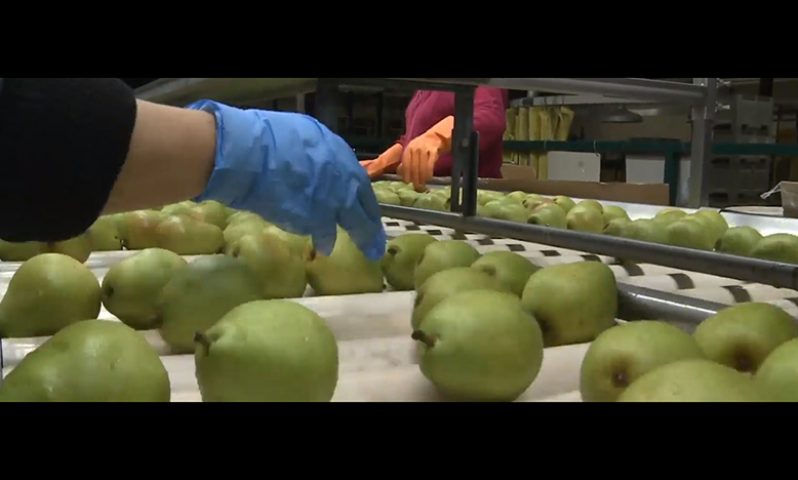TRADE plays a vital role in our everyday lives. It connects food systems and people and provides consumers with sufficient, diverse and nutritious food. It also generates income and employment for farmers, workers and traders around the world.
During the pandemic, international trade continued to link food deficit areas to surplus regions, contributing to food security and nutrition. But the war in Ukraine is threatening multilateral cooperation and risks fragmenting the global food market.
How can trade policies in food and agriculture address today’s challenges and how can they contribute to long-term sustainable development for all?
Between the first years of the new millennium and 2008, the global trade of goods and services became more important in the world economy and during this time, trade increased rapidly. However, since the financial crisis in 2008, this globalisation process has been stagnant.
Food and agricultural trade expanded rapidly in the 2000s, with more countries trading with each other and greater participation of low- and middle-income countries.
Countries expanded their participation in global food and agricultural trade and the landscape and geography of trade has changed.
Between 1995 and 2019, the structure of the global network of food and agricultural trade became more decentralised. In 1995, a few large trading hubs dominated the trade network. Over time, more hubs emerged and the dominance of the individual hubs weakened.
Regionalisation of food and agricultural trade – the tendency of countries to trade more within a region than with countries outside the region – increased between 1995 and 2019.
Countries formed different trade clusters within which they tend to trade more. These clusters are often shaped by geographic proximity and economic integration fostered by trade agreements.
Countries engage in trade to export what they can produce at a lower cost relative to other countries while importing what is relatively more expensive to be produced domestically.
COST OF PRODUCTION
Differences in technology use can influence costs. Agriculture is unique in that, on average, technology accounts for about three-quarters of productivity growth at the global level, while increases in the factors of production, such as land, make up for one-quarter of productivity growth.
The uneven distribution of natural resources across countries forms another key determinant of comparative advantage in food and agricultural trade. For example, water-stressed countries rely on importing water-intensive foods to complement domestic production and ensure food security. Countries with abundant land or water can export food and agricultural products that use these factors more intensively and capture large shares of global trade.
The productivity gap in agriculture is enormous. The richest 10 per cent of all countries produce 70 times as much agricultural value-added per worker as the 10 per cent poorest countries.
High trade costs can inhibit the exchange of goods and prevent countries from reaching their production potential.
Trade costs are determined by trade policies, transport costs, costs related to insurance, export and import procedures and time delays at the borders.
In low-income countries, trade costs are estimated to add up to 400 per cent to a product’s price. Such high costs inhibit trade integration and make it difficult for people to move out of poverty.
Trade agreements and co-operation at multilateral and regional level can reduce trade costs, boost trade and promote economic growth.
CONSTANTLY EVOLVING
As we have seen, global food and agricultural trade is constantly evolving. But how can countries become more resilient to global and regional shocks? Trade networks have been put to the test in recent years. Here we’ll see how they fared, or are faring, in the face of two recent shocks and get insights into how our trade networks can be further strengthened.
The outbreak of the COVID-19 pandemic tested the resilience of the food and agricultural trade network. COVID-19 affected demand, supply, logistics and trade of food and agricultural products. Yet, despite the multiple challenges, the food and agricultural trade network proved resilient to the shock. In fact, the only visible effects at the global level were short-lived disruptions of trade at the beginning of the pandemic, when significant restrictions on people’s movements were imposed.
The ongoing conflict between the Russian Federation and Ukraine sparked concerns about the impacts of the war on global food security, including through the disruption of global food and agricultural markets. The Russian Federation and Ukraine are important players in the global food trade. Together, in 2021 the Russian Federation and Ukraine were key global exporters of wheat, maize, rapeseed, sunflower seeds and sunflower oil.
Today, more countries are connected to more trade partners, which can strengthen their resilience to shocks in domestic and exporter markets. Nevertheless, only a few countries still account for most of the value traded and only some countries source a large variety of food and agricultural products from many different exporters.
To further strengthen their resilience, countries should aim to diversify the products they import and increase the number of their trading partners.
The increased connectivity between countries can strengthen the buffer capacity of the global food and agricultural trade network. Countries that are well-integrated in the global market and have a high number of trade links can benefit from trade by leveraging their comparative advantage globally.
Global cooperation in agricultural trade policies can address global challenges, such as economic crises, pandemics, conflicts and climate change, and it can contribute towards food security and healthy diets for all.
Natural resources, such as land and water play a key role in determining food and agricultural production and trade.
For countries with scarce land and water, and where climate conditions are unfavourable to agricultural production, trade is key to food security and nutrition. (FAO)




.png)









